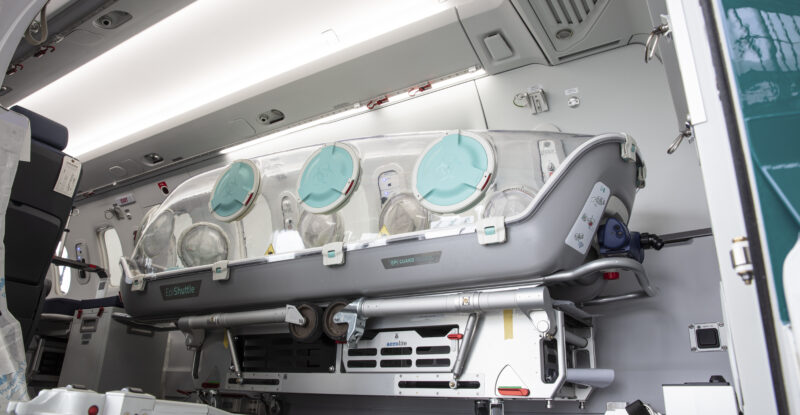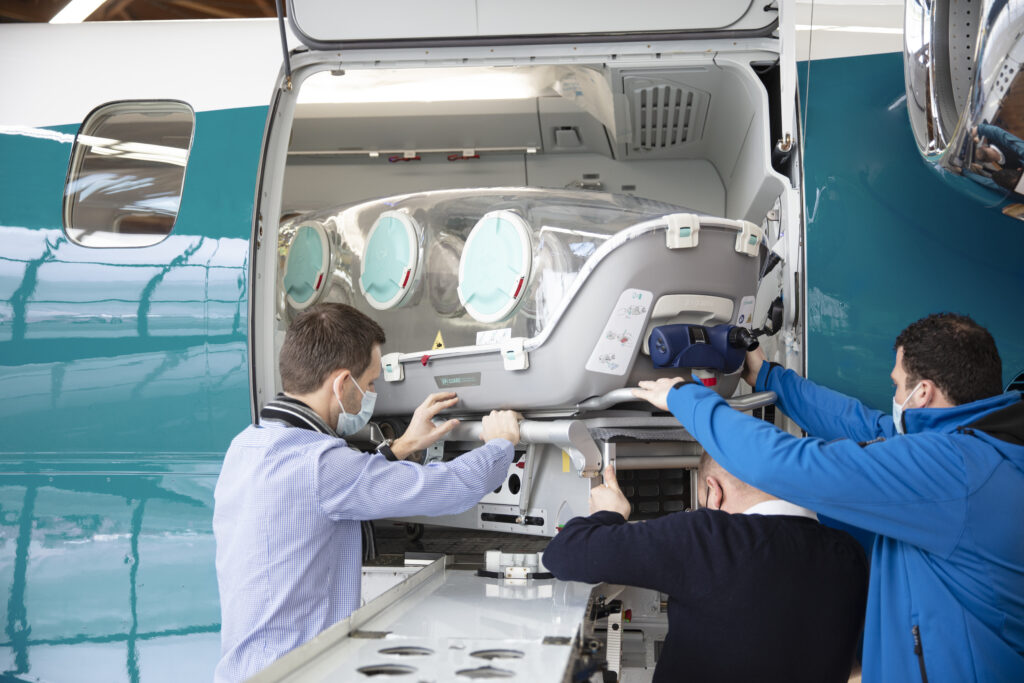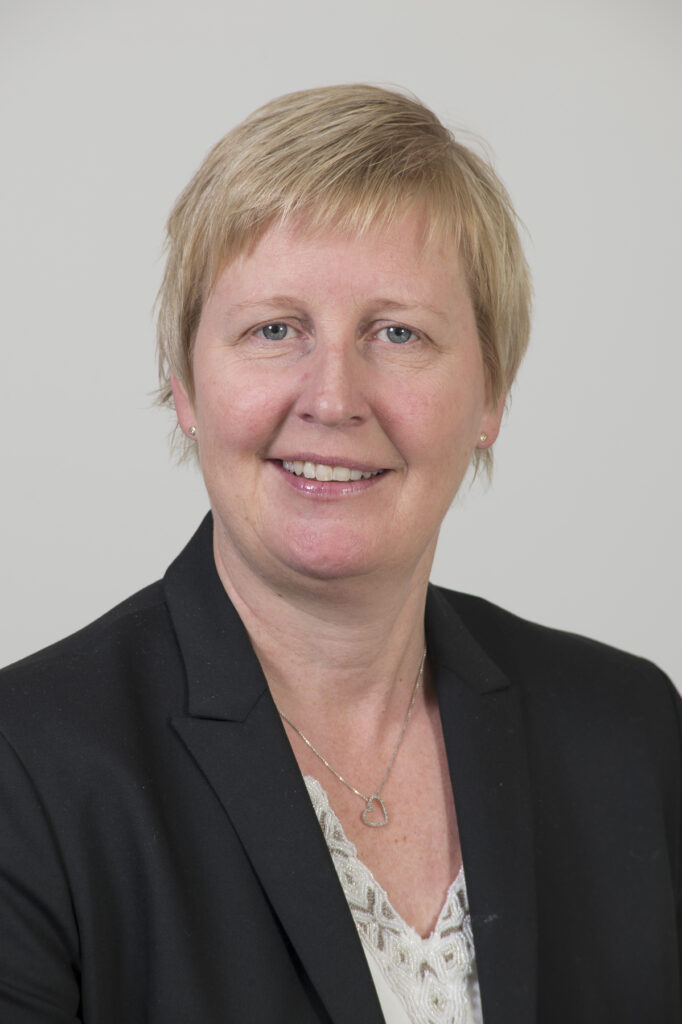During trials to certify the PC-24’s impressive unpaved runway capabilities, aircraft manufacturer Pilatus prioritized the requirements of the Royal Flying Doctor Service of Australia. A key early customer for the Swiss twinjet, the RFDS helped establish the PC-24’s credentials as an air ambulance.
Equipped with a large, upward-hinged cargo door aft of the port wing trailing edge, the aircraft also offers a surprisingly large cabin for its size, no doubt characteristics equally prized by the RFDS.
Now, with the PC-24’s air ambulance capabilities proven in service, the aircraft can facilitate an important, single-patient medical isolation and transport unit onboard. The so-called EpiShuttle from Norwegian medical technology company EpiGuard is designed to provide maximum patient safety and comfort while allowing critical care and treatment to be safely performed.
Together with its development partner, Aerolite AG, Pilatus is offering integration of the EpiShuttle in medevac PC-24s. Crucially, the EpiShuttle is being offered on the PC-24 at a time when the COVID-19 pandemic has fueled demand for air transport solutions for infectious patients.
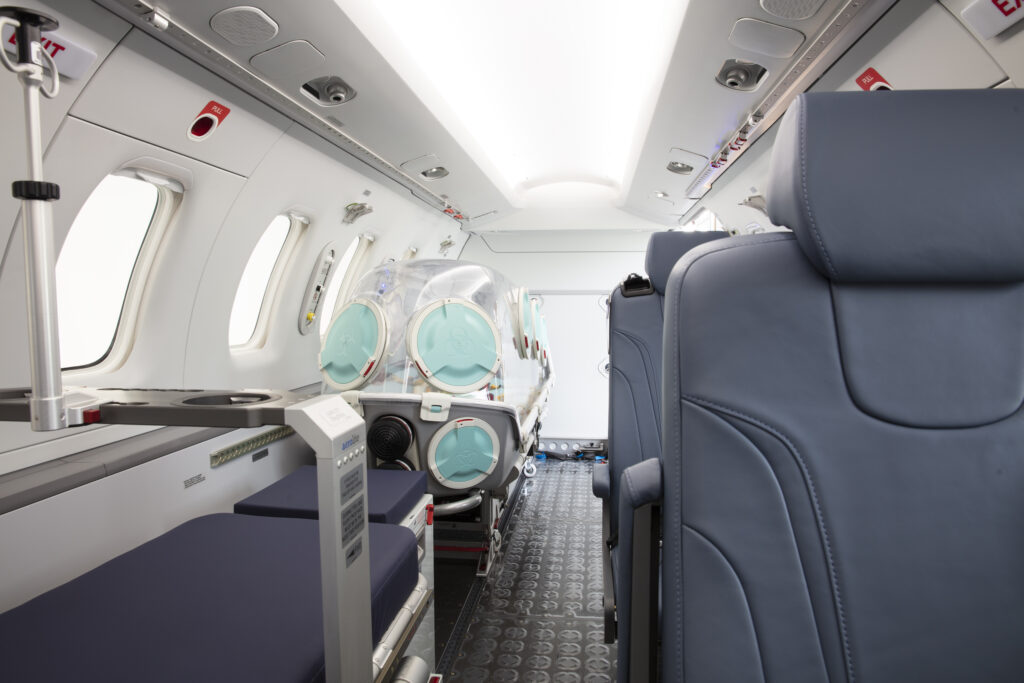
Inside the PC-24’s spacious cabin there is space for the EpiShuttle, as well as an aisle and seats for medical personnel. Image: Pilatus Aircraft Ltd.
Oliver Graf, PC-24 Program Manager at Pilatus, says that any PC-24 with the EASA-certified Aerolite Medical Interior supplemental type certificate has the equipment and systems — including electrical power, oxygen, vacuum and compressed air — required for EpiShuttle compatibility.
A Universal Trolley transfers the EpiShuttle from the road ambulance into the aircraft, where it is locked into the cabin floor. Graf notes that Pilatus has already seen interest in the EpiShuttle from operators of Aerolite-equipped jets.
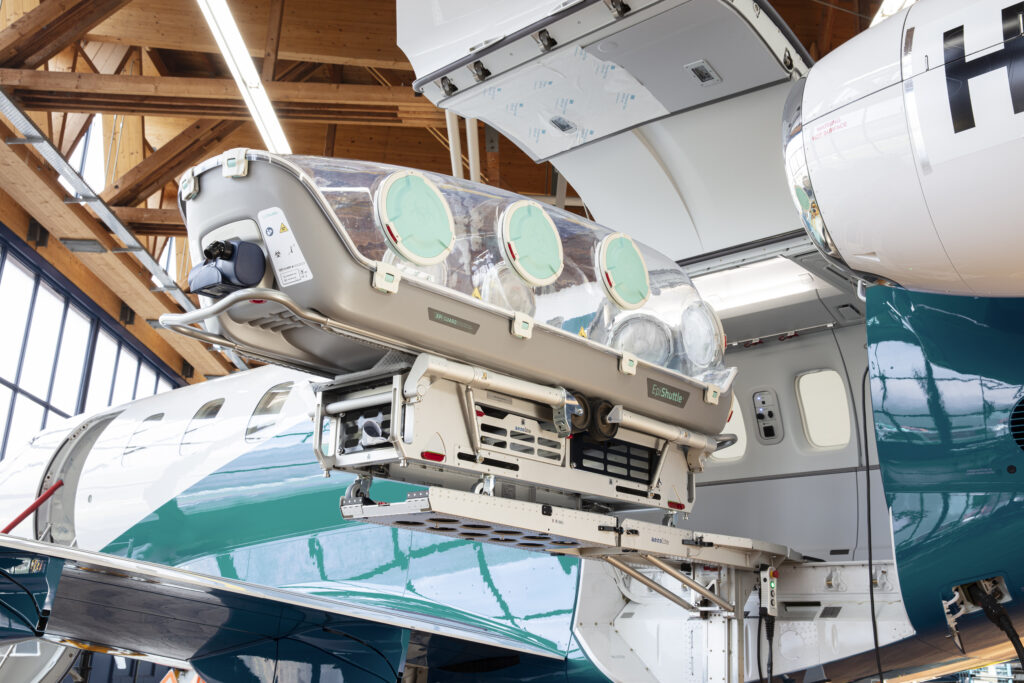
The EpiShuttle is moved on a Universal Trolley, compatible with both land ambulances and the aircraft lift system. Image: Pilatus Aircraft Ltd.
Even with the trolley in place, the cabin is wide enough to accommodate an aisle and seat, with ample working space around the EpiShuttle. Loading and unloading are via the freight door, using an integrated, electrically-operated loading system. A mechanical back-up is provided in case of a loss of electrical power.
The EpiShuttle keeps the patient fully isolated, protecting them, healthcare professionals and the nearby vicinity. With an EpiShuttle in use, medical personnel no longer need to wear full personal protective equipment, reducing fatigue and potentially preserving scarce supplies.
The EpiShuttle also enables safe operations without the need for a full disinfection of the ambulance or aircraft after each patient. It is already in widespread use globally, in a variety of helicopters and fixed-wing aircraft.
Ellen Cathrine Andersen, CEO at EpiGuard, explains: “A group of Norwegian doctors had the idea for the EpiShuttle after they brought home a doctor who had contracted Ebola during the outbreak in 2014. The experience reminded them that the equipment then in use for transporting patients with highly infectious diseases offered limited protection to healthcare professionals and poor safety for the patient. The EpiShuttle was therefore developed by medical experts with first-hand experience.
“This past year or so has demonstrated the crucial importance of emergency preparedness and safe patient transport. At the beginning of the pandemic, the pressure on intensive care beds in Europe was enormous and for a while, two EpiShuttle-equipped air ambulance providers in France and Germany flew the majority of the helicopter missions needed to move French patients to and from hospitals in Germany.”
Meanwhile, in a six-month period, Germany’s FAI Air Ambulance, which employs the EpiShuttle in its Challenger 604 jets, performed almost 70 flights moving COVID-19 patients in 47 countries.
“To date,” Andersen continues, “the EpiShuttle has been used on almost every continent, except Antarctica. It has transported CBRNE [Chemical, Biological, Radiological, Nuclear, Explosives] patients, plus those with measles and other infectious diseases requiring high security. Three years ago, the World Health Organization was provided with EpiShuttles to help control an Ebola outbreak in the Democratic Republic of Congo.”
The PC-24 offers genuine unpaved runway performance from dirt, grass, compacted snow and gravel, with little difference in operating characteristics between a grass surface at a remote airfield and the runway at an international airport. This unusual reach, combined with the Aerolite medical fit and, now, the ability to move highly contagious, seriously ill patients in secure isolation, provides a fast, go-anywhere means of moving the most serious cases to access first-line hospital care.
Related Articles:
- Airbus, Embraer each offer medevac conversions for aircraft
- Learjet and Challenger – intensive care in the air
- Magpas Air Ambulance: Aligning aviation culture and critical care
- Why the new ORBIS Flying Eye Hospital is revolutionary
All images credited to Pilatus Aircraft Ltd unless otherwise stated.




